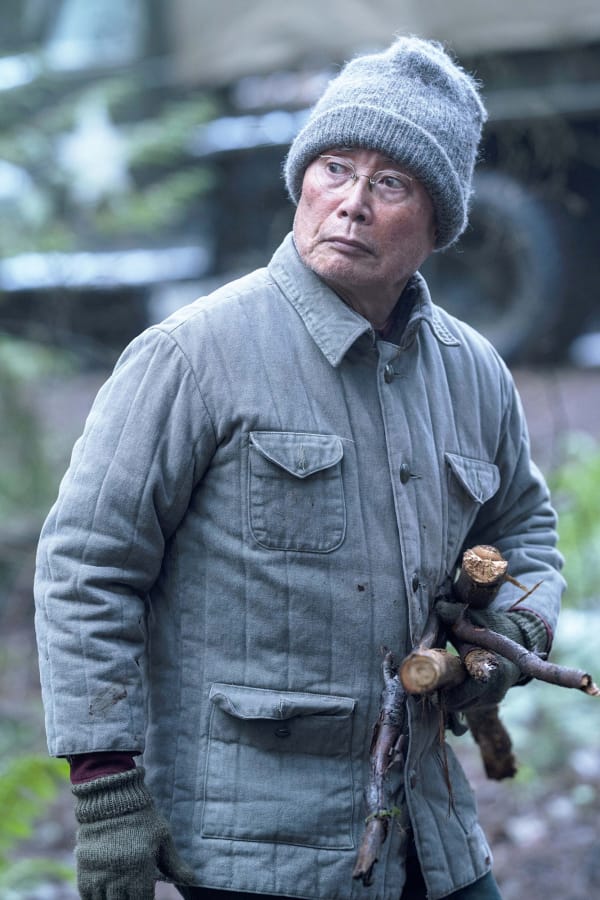BEVERLY HILLS, Calif. — Actor George Takei confronted scores of scary adventures as Lt. Sulu on “Star Trek,” but they were nothing compared to what he really experienced.
Takei was a 5-year-old kid when the United States declared war on Japan. And he and his parents were rounded up in the sweep that incarcerated many Japanese families.
“I was 5 years old when I was imprisoned and 8 1/2 when I came out,” he recalls. That proved a real horror story for Takei, and on Aug. 12 he’ll take part in a fictional one that often parallels his. AMC is premiering “The Terror: Infamy,” a haunting story set against the backdrop of the Japanese relocations, complete with a paralyzing ghost spirit that invades the characters.
Takei, 82, was not only there on the set to perform, he also served as technical adviser. “When I saw the replica of the internment camp they built in Vancouver, British Columbia, I immediately recognized it, but I recognized it from the standpoint of a 5-year-old kid,” he says.
“We had adopted a black, stray dog we called Blackie, and the place where he loved to crawl into when he had been reprimanded was that crawl space underneath the barrack. It was there, and I remembered it so well. The mess hall — the look and feel of it — the cacophony, the noise, and the crowding at the feeding trough. The look of everything was so authentic. It really took me back to my childhood.”
Alexander Woo, co-creator and executive producer of the series, says Takei proved invaluable. “The first day we shot in that mess hall, he said, ‘These dishes aren’t chipped enough.’ So we went and chipped a bunch of dishes so that we could have it completely authentic.”
“They were wonderful, brand-new plates there, and what I remembered were chipped, cracked,” says Takei. “Some of the plates leaked the juice of the slop that they put on it. And so we corrected that. And the cooks (on the set) were dressed in very neat, sanitary, white caps just like the restaurant workers. The way I remembered it was they — it got very sweaty in the kitchen and they had what we call ‘hachimaki,’ headbands, white cloth. And they were in undershirts. So we tried to tweak that a little bit so that I recognized it. But the extent of the details was really impressive.”
‘There’s so many layers’
All the speaking parts of the Japanese and Japanese-American characters are played by actors of Japanese descent. The series hero is portrayed by Derek Mio, a fourth-generation Japanese American whose grandfather lived on Terminal Island in California and was sent to an internment camp following the bombing of Pearl Harbor.
“When I first heard of the concept of this season, I just thought it was so brilliant because there’s so many layers that are playing a hand,” he says. “You have the terror that’s a mysterious figure haunting this community. You have the terror of the government and its own citizens. You have different relationships breaking down.
“And the horror that you feel that these characters are going through is brought to life, and it’s made more visceral. And so it just adds to that whole experience of this community. And so hopefully you can see that these are people just like anyone else. They might not look like your traditional television cast, but they’re human. They have families. They have loved ones. And they’ll do anything to protect them.”
The season is masterfully directed by Josef Kubota Wladyka, whose grandfather survived the bombing at Hiroshima. And while the landscape is the Japanese incarcerations, the real subject of the story is the skin-crawling terror. “From the beginning the strategy was to use the horror of Japanese ‘kaidan,’ or ghost stories, and the Japanese horror movies that are descended from it as an analog for the terror of the historical experience,” explains Woo. “So you really feel what it’s like to be in the skin of these characters.”



